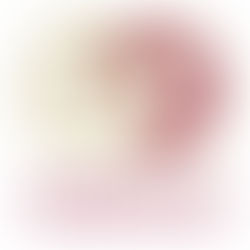On-glaze experiments
From the very beginning I was aware that my decorating process would involve stages of layering and subsequently more than the usual two firing processes, i.e. decorations added to greenware, the bisqueware and to glazed ceramics.
I have recently got around to doing some on-glaze tests. Here are some of them:
Mayco Design-liner on-glaze
Anna first suggested that I try out my design-liner on-glaze. I tried white, black and blue over the top of a Celadon glaze which was retired to ca. 1260°c. The design liner did fuse onto the glaze. Because it sat on top of the surface it didn't go shiny and one can feel it. I find it has a lot of potential especially when used on top of a coloured glaze.

So, my next step was to compare how the design liners performed on coloured clay. On these two test tiles have design liners both under and over glaze. These were fired in oxidation to ca 1260°c.


Top: just design liner underglaze with clear on top / Below: refired with design liner on top


So, the next step is to see how the design liners perform on top of glaze when a) unit clear e/w glaze fired to ca. 1060°c, b) Kevin Millward e/w glaze fired in same kiln to 1060°c and c) C1 s/w glaze fired in oxidation to ca 1260°c:

When using these glazes is obvious that the higher the temperature the better the design liners fit. However, some colours seem to to perform better than others. Anyway, I don't think using design liners over glazed surfaces fired to e/w temperatures is the way I want to go.
Chrysanthos Underglaze on-glaze
I then thought to try out how these underglaze would fair as on-glazes. This would open up more possibilities and colour choices and underglazes are cheeper than the design liners.
At this stage I decided to just try out the black as it has a great colour density while retaining a fluidity which lends itself to be use in an applicator bottle with a fine nib. The black had the tendency of pooling and I felt that I had less control than with the design liners. However, I did like the way I could use the nib to scratch out the feathery details.

Once refired to ca 1260°c in oxidation the result was even better than anticipated. The black has sunk into the glaze and looks like an underglaze. So, next I tried it on two little pinch pots on top of a much more opaque and matt glaze.

Comparing pre-fired application (top) with fired results (below) show very clearly how much of the black has actually sunk into the clay. On an opaque glaze the result as patchy and unpredictable, which doesn't mean that they cannot be put to use.

My next step will be to try out some of the other Chrysanthos colours and see whether I get similar results.
First attempt at mixing my own on-glaze
I also did an initial trial of mixing my own on-glaze colour using glycerol mixed with on-glaze cobalt blue pigment. Maybe the ratio between pigment and medium was too wet or it could have benefitted from an additive such as a bit of clay but my mixture did not perform well. It crawled on the surface (left). After firing to ca 1260°c in oxidation the blue turned less vivid and wasn't opaque enough to cover underlying colours (right). Not a success.


Lustres
My latest trial involved the use of lustres. I have had some lustres for some time but was unsure how to use them as some of them can be fiendishly expensive. Wendy talked me through how to use them when painting on as I am currently only interested in adding only little areas of lustre details to my designs.


I just added little details on these two little pinch pots. I wanted to see how different the gold lustre is depending on whether it sits on glazed or unglazed areas. I used a very small paint brush. Applying the lustre to unglazed areas was more difficult as it has the tendency to bleed whereas it stays in place on top of a glazed surface. I expected to the lustre to be more visible on the glazed surfaces. This wasn't really the case even though the lustre wasn't as shiny here. I like using lustres on my pieces if used discreetly. I will now feel confident using my precious little bit platinum lustre, which I bought months ago. However, I must remember to apply it somewhere with good ventilation as the fumes make me feel quite nauseous.

















